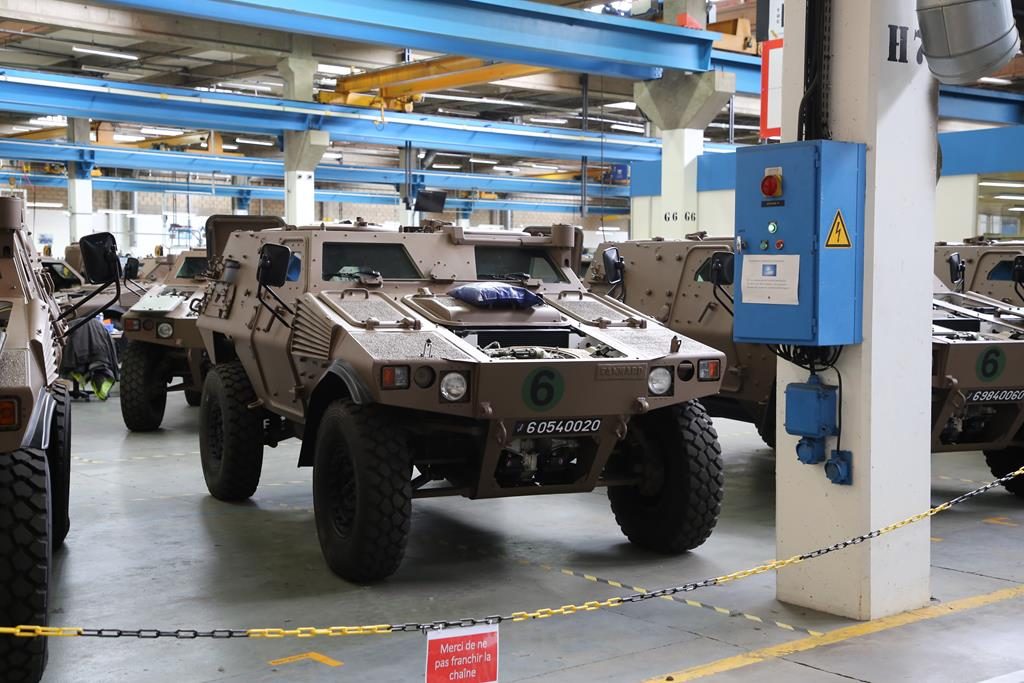In the ever-evolving landscape of global defense, the role of military vehicle manufacturers is paramount. These manufacturers are the backbone of national security, providing cutting-edge vehicles designed to meet the rigorous demands of modern warfare. From tanks and armored personnel carriers to advanced drones and reconnaissance vehicles, the innovation and precision in military vehicle manufacturing ensure the safety and effectiveness of armed forces worldwide.

History and Evolution of Military Vehicles
The history of military vehicles dates back to ancient times when chariots were the pinnacle of battlefield technology. However, it was the advent of the internal combustion engine in the early 20th century that revolutionized military transport and combat. The development of tanks during World War I marked a significant leap, combining mobility with firepower and armor. Over the decades, military vehicles have evolved with advancements in engine technology, armor materials, and weapon systems, continually adapting to the changing nature of warfare.
Key Types of Military Vehicles
Armored Fighting Vehicles (AFVs)
Armored Fighting Vehicles (AFVs) are the cornerstone of modern armies, designed to engage and defeat enemy forces. These include:
- Main Battle Tanks (MBTs): Heavily armored and equipped with powerful guns, MBTs like the M1 Abrams and Leopard 2 are designed for frontline combat.
- Infantry Fighting Vehicles (IFVs): These vehicles, such as the Bradley Fighting Vehicle, transport infantry while providing fire support.
- Armored Personnel Carriers (APCs): Examples include the Stryker and M113, which focus on safely transporting troops to the battlefield.
Support and Utility Vehicles
Beyond combat roles, military operations rely on a variety of support and utility vehicles:
- Logistics and Supply Trucks: Essential for transporting supplies, these vehicles ensure the continuous flow of resources to front-line troops.
- Reconnaissance Vehicles: Lightly armored and highly mobile, these vehicles, like the Humvee, gather intelligence and perform scouting missions.
- Engineering Vehicles: Designed for construction and repair tasks, vehicles like the M88 Recovery Vehicle play a crucial role in maintaining infrastructure and clearing obstacles.
Aerial and Naval Vehicles
In addition to land vehicles, military manufacturers also produce sophisticated aerial and naval vehicles:
- Drones and Unmanned Aerial Vehicles (UAVs): These range from reconnaissance drones like the RQ-4 Global Hawk to armed drones such as the MQ-9 Reaper.
- Naval Vessels: From aircraft carriers and destroyers to submarines, naval vehicles extend military reach and power across the seas.
Technological Innovations in Military Vehicles
Advanced Armor and Defensive Systems
Modern military vehicles incorporate advanced materials such as composite armor, which provides superior protection against projectiles and explosive devices. Additionally, active protection systems (APS) like the Trophy system detect and neutralize incoming threats, significantly enhancing vehicle survivability.
Weapon Systems and Firepower
Military vehicles are equipped with state-of-the-art weapon systems. Autoloaders increase the rate of fire for tanks, while remote weapon stations (RWS) allow operators to engage targets without exposing themselves to enemy fire. Precision-guided munitions ensure high accuracy and effectiveness against specific targets.
Mobility and Powertrain Enhancements
Enhanced mobility is achieved through advanced suspension systems and powerful diesel or turbine engines. Hybrid-electric powertrains are also being explored for their potential to reduce fuel consumption and heat signatures, making vehicles more efficient and less detectable by enemies.
C4ISR Systems
Command, Control, Communications, Computers, Intelligence, Surveillance, and Reconnaissance (C4ISR) systems integrate various technologies to provide comprehensive situational awareness and enhance decision-making capabilities on the battlefield.
Major Players in Military Vehicle Manufacturing
General Dynamics Land Systems
General Dynamics Land Systems is a leading manufacturer known for the M1 Abrams tank. The company's innovations in vehicle design and weaponry set industry standards and support military forces worldwide.
BAE Systems
BAE Systems produces a wide range of military vehicles, including the Bradley Fighting Vehicle and the M109 Paladin artillery system. Their focus on integrating cutting-edge technology ensures their products meet modern defense needs.
Rheinmetall Defence
Rheinmetall Defence, a German defense contractor, is renowned for its Leopard 2 tank and Boxer IFV. The company excels in developing advanced armor and weapon systems, contributing to the strength and versatility of military forces.
Lockheed Martin
Lockheed Martin is a key player in the development of UAVs and aerospace defense systems. Their expertise in aerospace engineering extends to military drones and support vehicles, providing critical capabilities for reconnaissance and combat operations.
Global Impact and Future Trends
International Collaborations
International collaborations and joint ventures are common in military vehicle manufacturing. Countries often pool resources and expertise to develop advanced vehicles, exemplified by projects like the European Main Battle Tank (EMBT), a collaboration between Germany and France.
Future Trends in Military Vehicle Development
The future of military vehicle manufacturing is shaped by emerging technologies such as artificial intelligence (AI), autonomous systems, and quantum computing. These advancements promise to enhance vehicle capabilities, reduce human risk, and introduce new dimensions to warfare strategy.
Sustainability and Environmental Considerations
Environmental sustainability is becoming increasingly important. Military manufacturers are exploring eco-friendly materials, alternative fuels, and energy-efficient designs to minimize the environmental footprint of their vehicles.
Conclusion
The military vehicle manufacturing industry stands at the forefront of defense technology, continually advancing to meet the dynamic challenges of modern warfare. Through innovation in armor, weapon systems, mobility, and intelligence systems, these manufacturers ensure that armed forces are equipped with the best tools to maintain global security. As technology evolves, the role of military vehicle manufacturers will only become more critical, driving the future of defense capabilities.